
Panglao: The Tropical Jewel of Bohol
Discover Panglao, Bohol's tropical jewel, known for its pristine beaches, vibrant marine life, and captivating natural and cultural attractions.
Nestled in the heart of the Philippines, Panglao is an island paradise that promises an unforgettable experience for every traveler. Known for its white sandy beaches, clear turquoise waters, and rich marine life, Panglao is a haven for those seeking both relaxation and adventure. Alona Beach, the most famous stretch of sand on the island, is a bustling hub of activity with numerous resorts, restaurants, and dive shops. Here, you can bask in the sun, indulge in fresh seafood, or embark on a diving expedition to explore the vibrant coral reefs. Beyond the beach, Panglao offers a variety of attractions that cater to different interests. The Hinagdanan Cave, with its stunning stalactites and underground lagoon, is a must-visit for nature enthusiasts. For a taste of local culture, visit the centuries-old Panglao Church, an architectural gem with intricate designs and historical significance. The island is also home to the Panglao Marine Biodiversity Center, where you can learn about the local efforts to preserve the rich aquatic life. Whether you are a thrill-seeker looking for your next adventure or a leisure traveler wanting to unwind, Panglao has something for everyone. From its picturesque landscapes to its warm and welcoming locals, this tropical jewel of Bohol is a destination that will leave you with memories to last a lifetime.
Local tips in Panglao
- Visit Alona Beach early in the morning to avoid the crowds and enjoy a peaceful experience.
- Bring cash as many local shops and restaurants may not accept credit cards.
- Rent a scooter to explore the island at your own pace and discover hidden gems.
- Try the local delicacy, kinilaw, a type of ceviche made with fresh fish and vinegar.
- Book diving trips in advance, especially during peak season, to secure a spot.
- Wear water shoes when exploring Hinagdanan Cave to navigate the rocky terrain safely.
Panglao: The Tropical Jewel of Bohol
Nestled in the heart of the Philippines, Panglao is an island paradise that promises an unforgettable experience for every traveler. Known for its white sandy beaches, clear turquoise waters, and rich marine life, Panglao is a haven for those seeking both relaxation and adventure. Alona Beach, the most famous stretch of sand on the island, is a bustling hub of activity with numerous resorts, restaurants, and dive shops. Here, you can bask in the sun, indulge in fresh seafood, or embark on a diving expedition to explore the vibrant coral reefs. Beyond the beach, Panglao offers a variety of attractions that cater to different interests. The Hinagdanan Cave, with its stunning stalactites and underground lagoon, is a must-visit for nature enthusiasts. For a taste of local culture, visit the centuries-old Panglao Church, an architectural gem with intricate designs and historical significance. The island is also home to the Panglao Marine Biodiversity Center, where you can learn about the local efforts to preserve the rich aquatic life. Whether you are a thrill-seeker looking for your next adventure or a leisure traveler wanting to unwind, Panglao has something for everyone. From its picturesque landscapes to its warm and welcoming locals, this tropical jewel of Bohol is a destination that will leave you with memories to last a lifetime.
Iconic landmarks you can’t miss
Hinagdanan Cave
Discover the stunning limestone formations and serene beauty of Hinagdanan Cave in Bohol, a must-visit natural wonder for all travelers.
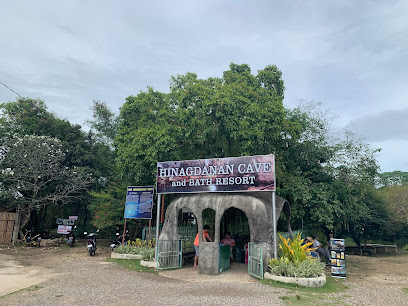
Alona Beach
Discover the stunning beauty of Alona Beach in Panglao, a top destination in the Philippines for sun, sea, and adventure.

Napaling Reef
Discover the vibrant underwater life and stunning coral gardens at Napaling Reef, a must-visit snorkeling and diving destination in Panglao, Bohol.
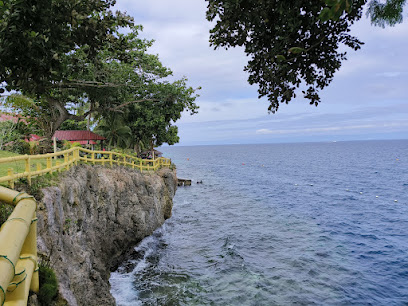
South Farm Panglao Bohol
Experience the serene beauty of South Farm Panglao Bohol, where nature meets relaxation in a charming agricultural setting.
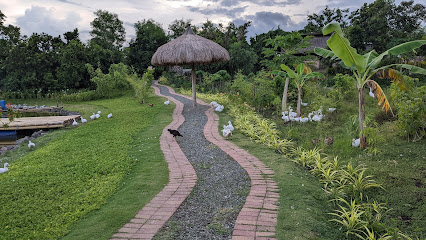
Panglao Watchtower
Explore the rich history and breathtaking views at Panglao Watchtower, a must-visit landmark on Bohol Island.

Nova Shell Museum
Explore the Nova Shell Museum in Panglao, Bohol—where marine wonders and local crafts come together for a captivating experience.

St. Augustine Parish Church
Discover the serene beauty and rich heritage of St. Augustine Parish Church in Panglao, a captivating spiritual haven for tourists in Bohol.

Panglao Beach
Discover the pristine beauty of Panglao Beach in Bohol, where white sands meet crystal-clear waters amidst vibrant marine life and breathtaking sunsets.

Balicasag Island Panglao Bohol
Explore the tranquil beauty and vibrant marine life of Balicasag Island, a tropical haven near Panglao, Bohol, perfect for snorkeling and relaxation.

Panglao Town Plaza
Experience the vibrant culture and relaxing ambiance of Panglao Town Plaza, a perfect retreat for families and tourists in Bohol.
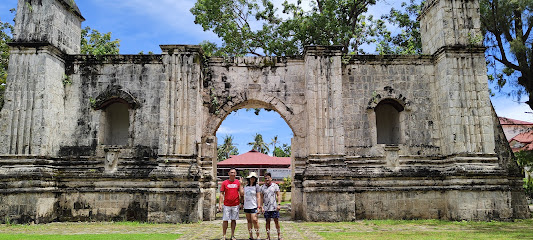
Unmissable attractions to see
Hinagdanan Cave
Discover the enchanting beauty of Hinagdanan Cave in Bohol, a must-visit natural attraction with stunning rock formations and crystal-clear waters.

Balicasag Marine Sanctuary
Explore the underwater paradise of Balicasag Marine Sanctuary - a vibrant marine reserve in Bohol, perfect for snorkeling and diving enthusiasts.

South Farm Panglao Bohol
Experience the tranquility of South Farm Panglao, where nature meets agriculture on the beautiful island of Bohol.

Panglao Watchtower
Experience the breathtaking views and rich history at Panglao Watchtower, a captivating landmark in Bohol, Philippines.

Nova Shell Museum
Explore the Nova Shell Museum in Panglao, Bohol, where marine life and craftsmanship unite to offer a unique educational experience.

Hermit Beach
Experience the tranquil beauty of Hermit Beach, a hidden gem in Panglao, Bohol, perfect for relaxation and breathtaking sunsets.

Best Sunset Hermit Beach
Discover the serene beauty of Best Sunset Hermit Beach in Panglao, Bohol, renowned for stunning sunsets and pristine sandy shores.

Kalipayan Beach
Experience the serene beauty of Kalipayan Beach in Panglao, a tranquil escape perfect for relaxation and aquatic adventures.

Tapurok
Explore Tapurok: A hidden gem in Panglao, Bohol, offering serene landscapes and rich cultural experiences.

JEFJEF BANGKA(BOHOL STORY보홀스토리)
Experience the stunning landscapes and rich culture at JEFJEF BANGKA in Panglao, Bohol – a must-visit tourist attraction in the Philippines.

Essential places to dine
SHAKA
Discover unique flavors at SHAKA in Panglao—where delicious meets delightful in a vibrant dining atmosphere.

Giuseppe Pizzeria & Sicilian Roast Bohol
Savor authentic Italian cuisine at Giuseppe Pizzeria & Sicilian Roast in Panglao – where every bite takes you on a delicious journey through Italy.

Bamboo Place
Discover Bamboo Place: A lively restaurant and cocktail bar in Panglao Island offering delicious food, creative cocktails, and a vibrant atmosphere.

Bougainvillea Spanish Restaurant and Wine Bar
Experience authentic Spanish cuisine at Bougainvillea Spanish Restaurant & Wine Bar in Panglao – where every meal is a delightful culinary journey.

La Familia
Experience authentic Filipino flavors at La Familia in Panglao – where every dish is crafted with passion using fresh local ingredients.

Gavroche
Discover the essence of French gastronomy at Gavroche in Panglao—where every dish tells a story and every sip delights.

The Buzzz Cafe
Experience the essence of Filipino cuisine with fresh local ingredients at The Buzzz Cafe in beautiful Panglao.

Paprika Restaurant
Experience the vibrant flavors of Filipino cuisine at Paprika Restaurant in Panglao—where every dish tells a story.
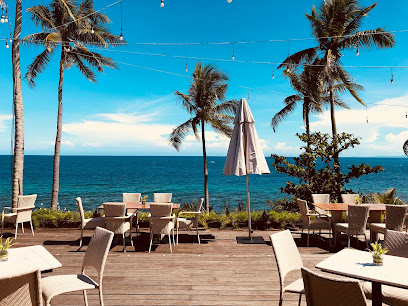
A Tavola
Discover exquisite flavors at A Tavola in Panglao - where every meal is a celebration of Bohol's rich culinary heritage.

Saffron Restaurant
Experience exquisite dining at Saffron Restaurant in Amorita Resort on Alona Beach – where local flavors meet stunning ocean views.

Markets, malls and hidden boutiques
TAHU - handmade souvenirs
Explore TAHU on Panglao Island for exquisite handmade souvenirs that embody the spirit of Bohol's rich cultural heritage.
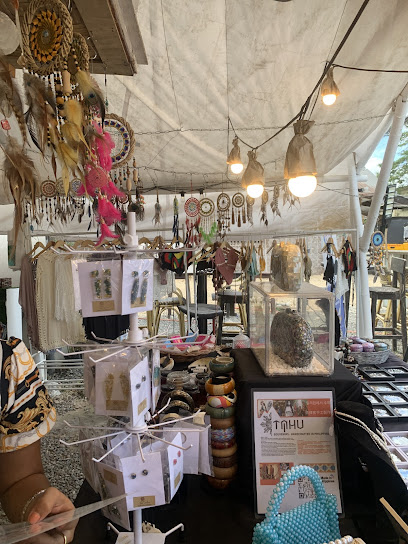
Yool's Souvenir shop
Discover unique handcrafted treasures at Yool's Souvenir Shop in Panglao, celebrating the rich culture and artistry of Bohol.

Sean-Sean Store
Discover the charm of local shopping at Sean-Sean Store in Panglao, Bohol, offering a unique blend of local goods and friendly service.

PANGLAO GIFT SHOP
Explore the vibrant Panglao Gift Shop for unique souvenirs and local crafts that capture the spirit of Bohol's rich culture.

Jubelle Souvenirs
Explore Jubelle Souvenirs in Panglao for authentic local crafts and unique gifts that capture the spirit of Bohol's rich culture.

Islands Souvenirs - Tawala Panglao
Explore authentic Filipino crafts and unique treasures at Islands Souvenirs, a must-visit shop in Panglao, Bohol.

Jzaki Alona Panglao
Discover unique souvenirs and local crafts at Jzaki Alona Panglao, a charming stop along Alona Beach Road in beautiful Bohol.

Panglao Crafts and Tokens
Explore the heart of Bohol's craftsmanship at Panglao Crafts and Tokens, where every gift tells a story of local artistry and culture.

Bongo Souvenir and Boutique Shop Alona Beach Panglao
Discover unique local crafts and vibrant souvenirs at Bongo Souvenir and Boutique Shop in Alona Beach, Panglao, Bohol.

Anabelle's Boutique & Skin Care
Experience the ultimate relaxation and beauty treatments at Anabelle's Boutique & Skin Care in Panglao, Bohol.

Essential bars & hidden hideouts
Bamboo Place
Experience the vibrant flavors and relaxing atmosphere at Bamboo Place, a tropical restaurant and cocktail bar in Panglao, Bohol.

Bougainvillea Spanish Restaurant and Wine Bar
Experience the rich flavors of Spain at Bougainvillea Spanish Restaurant and Wine Bar, a culinary gem in Panglao, Bohol.
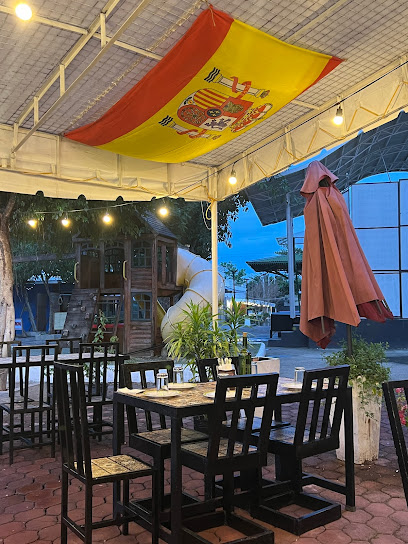
Paddy’s Irish Beer Pub and Restaurant
Discover the vibrant Irish spirit at Paddy’s Irish Beer Pub in Panglao, Bohol, where great food, drinks, and entertainment come together.

The Buzzz Cafe
Discover The Buzzz Cafe, an idyllic beachfront restaurant in Panglao, Bohol, offering fresh, local flavors and a relaxed dining experience.
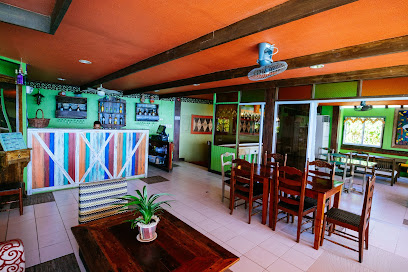
Aluna Beach Lounge
Experience the vibrant nightlife and tropical ambiance at Aluna Beach Lounge, your ideal spot on Alona Beach in Panglao, Bohol.

Destino
Discover the vibrant nightlife of Panglao, where stunning beaches meet lively bars and unforgettable experiences await.
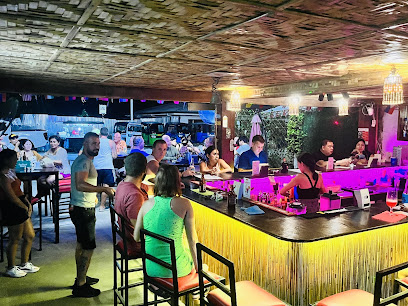
The Monkey Bar by Chef Jenzel Fontilla
Experience culinary excellence at The Monkey Bar in Panglao, where innovative dishes meet stunning views and vibrant atmosphere.

Rumor Draft Bar and Restaurant
Discover the vibrant culinary scene at Rumor Draft Bar and Restaurant in Panglao, where delicious grilled dishes meet a lively beachfront atmosphere.

Udo's Bar
Discover Udo's Bar in Panglao—where vibrant nightlife meets refreshing cocktails and unforgettable island vibes.

Jeff's Bar..k
Experience the lively ambiance and delightful Asian cuisine at Jeff's Bar..k in Panglao, a perfect spot for relaxation and socializing.

Local Phrases
-
- HelloKumusta
[koo-moo-sta] - GoodbyePaalam
[paa-lam] - YesOo
[oh-oh] - NoHindi
[hin-dee] - Please/You're welcomePaki
[pa-kee] - Thank youSalamat
[sa-la-mat] - Excuse me/SorryPasayloa
[pa-sa-ylo-a] - How are you?Kumusta ka?
[koo-moo-sta ka?] - Fine. And you?Maayo. Ikaw?
[maa-yo. ee-kaw?] - Do you speak English?Kahibalo ka mobalita sa Ingles?
[ka-hee-ba-lo ka moba-lee-ta sa Ingles?] - I don't understandWala ko kasabot
[wa-la ko ka-sa-bot]
- HelloKumusta
-
- I'd like to see the menu, pleaseGusto ko makakita sa menu, palihug
[gus-to ko ma-ka-kee-ta sa me-nu, pa-li-hug] - I don't eat meatDili ko kaon ug karne
[dee-lee ko ka-on oog kar-ne] - Cheers!Kampay!
[kam-pai] - I would like to pay, pleaseGusto ko magbayad, palihug
[gus-to ko mag-ba-yad, pa-li-hug]
- I'd like to see the menu, pleaseGusto ko makakita sa menu, palihug
-
- Help!Tabang!
[ta-bang] - Go away!Lakaw!
[la-kaw] - Call the Police!Tawagi ang Police!
[ta-wa-gi ang Po-leece] - Call a doctor!Tawagi og doctor!
[ta-wa-gi og dok-tor] - I'm lostNawala ko
[na-wa-la ko] - I'm illSakit ko
[sa-kit ko]
- Help!Tabang!
-
- I'd like to buy...Gusto ko mopalit...
[gus-to ko mo-pa-lit...] - I'm just lookingNagtan-aw lang ko
[nag-tan-aw lang ko] - How much is it?Tagpila ni?
[tag-pee-la nee?] - That's too expensiveMasyado ni kamahal
[ma-sya-do nee ka-ma-hal] - Can you lower the price?Maayo ba kamo motaas sa presyo?
[maa-yo ba ka-mo mota-as sa pres-yo?]
- I'd like to buy...Gusto ko mopalit...
-
- What time is it?Unsa na oras?
[oon-sa na o-ras?] - It's one o'clockAlas uno
[a-las oo-no] - Half past (10)Alas napulo ug tunga
[a-las na-poo-lo oog toong-ga] - MorningBuntag
[boon-tag] - AfternoonHapon
[ha-pon] - EveningGabii
[ga-bee] - YesterdayKagahapon
[ka-ga-ha-pon] - TodayKaron
[ka-ron] - TomorrowUgma
[oog-ma] - 1Usa
[oo-sa] - 2Duha
[doo-ha] - 3Tulo
[too-lo] - 4Upat
[oo-pat] - 5Lima
[lee-ma] - 6Unom
[oo-nom] - 7Pito
[pee-to] - 8Walo
[wa-lo] - 9Siyam
[see-yam] - 10Puluh
[poo-loo]
- What time is it?Unsa na oras?
-
- Where's a/the...?Asa ang...?
[a-sa ang...?] - What's the address?Unsay address?
[oon-say ad-dres?] - Can you show me (on the map)?Maayo ba kamo motudlo nako (sa mapa)?
[maa-yo ba ka-mo mo-tood-lo na-ko (sa ma-pa)?] - When's the next (bus)?Unsa oras ang sunod (bus)?
[oon-sa o-ras ang su-nod (bus)?] - A ticket (to ....)Usa ka ticket (paingon sa....)
[oo-sa ka ti-ket (pa-ing-gon sa....)]
- Where's a/the...?Asa ang...?
History of Panglao
-
Panglao's history dates back to pre-colonial times when it was inhabited by indigenous groups engaged in fishing and trade. The island became significant during the Spanish colonization in the 16th century, as it was strategically located near the waters that connected to the main island of Bohol. The arrival of Spanish explorers in 1565 led to the establishment of settlements and the introduction of Christianity, altering the cultural landscape of the region.
-
In 1798, Panglao was officially recognized as a parish, leading to the construction of the St. Augustine Church. This church became a focal point for the community and is known for its unique coral stone architecture. The establishment of the parish not only solidified the presence of Catholicism in Panglao but also played a crucial role in the organization of community life and governance during the Spanish colonial period.
-
During World War II, Panglao, like the rest of the Philippines, experienced the impact of Japanese occupation. The island was strategically important due to its proximity to Bohol and was used by Japanese forces. Local residents faced hardships, and many were forced into labor or conscripted into military service. The war left an indelible mark on Panglao, leading to changes in the social fabric of the community.
-
After the war, Panglao began to recover and gradually emerged as a tourist destination due to its stunning beaches and vibrant marine life. The 1970s and 1980s saw the development of resorts and dive shops, capitalizing on the region's natural beauty. This shift not only transformed the local economy but also introduced new cultural dynamics as tourism brought diverse influences to the island.
-
Today, Panglao celebrates its rich cultural heritage through various festivals, the most notable being the San Juan Festival. This annual event, held in honor of St. John the Baptist, showcases local traditions, music, dance, and culinary delights, reflecting the blend of indigenous and Spanish influences. The preservation of local customs and the promotion of cultural events play a vital role in maintaining Panglao's unique identity amidst the growing tourism industry.
Panglao Essentials
-
Panglao is easily accessible from Tagbilaran City, which is the capital of Bohol. You can reach Panglao by taking a taxi or a tricycle from Tagbilaran Airport, which is about 20 kilometers away. Alternatively, if you are coming from other areas in Bohol, such as Loboc or Anda, local buses and vans are available to take you to Panglao. The journey time from Tagbilaran is approximately 30 minutes.
-
Panglao is a relatively small island, making it easy to explore. Motorbike rentals are popular, and you can also hire bicycles for a more leisurely pace. Tricycles and habal-habal (motorcycle taxis) are readily available for short distances. If you prefer a more comfortable option, private taxis can be booked through your hotel or local services.
-
Panglao is generally safe for tourists, but it's wise to take the usual precautions. Avoid isolated areas at night and keep your belongings secure. While violent crime is rare, petty thefts such as pickpocketing can occur in crowded places, especially near tourist hotspots. Areas to be cautious of include remote beaches during off-peak hours.
-
In case of an emergency, dial 911 for police or medical assistance. There are hospitals and clinics in Tagbilaran City, which are about 30 minutes away. It's advisable to have travel insurance that covers medical emergencies. For non-critical health issues, local pharmacies are available in Panglao.
-
Fashion: Do wear lightweight, breathable clothing suitable for warm weather. Avoid overly revealing attire, especially in religious sites. Religion: Do respect local customs, especially during church visits; covering shoulders and knees is appreciated. Public Transport: Do be courteous in tricycles and taxis, and don’t engage in loud conversations. Greetings: Do greet locals with a smile and a friendly 'Hello.' Eating & Drinking: Do savor local dishes like lechon and seafood. Don’t drink tap water; always opt for bottled water.
-
To experience Panglao like a local, visit the public markets in the early morning for fresh produce and local delicacies. Engage with local fishermen or artisans to learn about their crafts. Don't miss trying the local street food, particularly the fresh seafood offered by vendors along the beach. For a unique experience, consider joining a local cooking class to learn how to prepare traditional Filipino dishes.
Nearby Cities to Panglao
-
Things To Do in Cebu City
-
Things To Do in Camiguin
-
Things To Do in Cagayan de Oro
-
Things To Do in Siargao
-
Things To Do in Boracay
-
Things To Do in Davao City
-
Things To Do in Zamboanga City
-
Things To Do in Legazpi
-
Things To Do in Puerto Princesa
-
Things To Do in Palawan
-
Things To Do in Tagaytay
-
Things To Do in Manila
-
Things To Do in Subic
-
Things To Do in Angeles City
-
Things To Do in Sandakan












